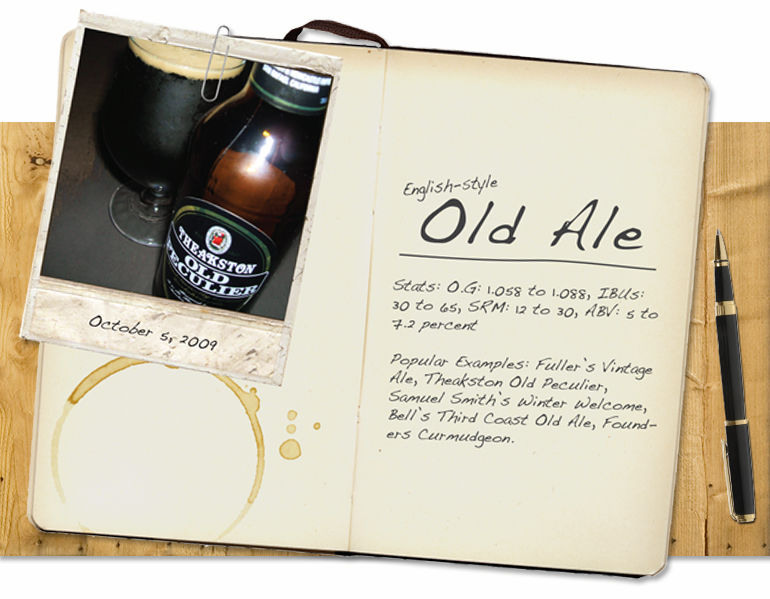Start 14-Day Trial Subscription
*No credit card required

What is Old Ale?
Old ales can be confusing. Some are actually old, others not. Some are called winter warmers, stock ale or “keeping” ale. Some like to think they are really barleywines. Whichever aliases old ale takes on, one thing is clear – the style gets around. Here we’ll focus on the traditional English-style old ale and highlight its unique characteristics as compared to its progeny.
Before the Industrial Revolution, the typical beer drinker in England likely had an affinity for a sort of “old” beer – beer that had been cellared in oak tuns for a year or more, taking on an astringent character from tannins in the wood and being exposed to resident bacteria like lactobacillus. Add normal oxidation to the mix and the occasional rogue strain of brettanomyces and you’ve got anything but a clean beer. The result would have been tart – even funky – and replete with complex flavors that may have taken a while to acquire a taste for.
As time went on and technologies and storage conditions improved, fresher beers could be consistently produced, but the taste for the old stock ales continued. Many brewers continued with the practice of aging a portion of beer in the wood and blending it with fresh beer to add complexity and character to their batches. Any of the aged beer that was not blended was packaged and sold as “old ale,” likely because it was precisely that.
The “old ale” moniker stuck, and it has come to represent a relatively strong – typically stronger than a bitter or porter at least – beer with a malt-heavy disposition, thick mouth feel and some residual sweetness due to lower attenuation. These days, many can be cellared effectively for extended periods of time and will take on some of the stale characteristics associated with the examples of yesteryear.
Beers known as “winter warmers” are typically a variation of an old ale, sometimes brewed with holiday spices or other special ingredients and released seasonally. An example of a popular winter warmer is Samuel Smith’s Winter Welcome. The line between old ale and barleywine can often be blurry, but in general old ales, particularly those of the English variety, are going to be lower gravity ales with a more restrained hop profile. Old ales run the gamut between the restrained maltiness of mild ale and the big, aggressive character of a barleywine. Most English examples – with one notable exception being O’Hanlon’s Thomas Hardy’s Ale, at 11-plus-percent ABV – tend to weigh-in around the lower end of the alcohol spectrum, relatively speaking.
Brewed primarily with well-modified pale malts, caramel malt and some specialty grains for aroma and color, old ales are often brewed with a generous portion of starchy adjuncts, like oats or wheat, to add to the mouth feel. Traditionally very low in hop aroma and bitterness, any type of hop may be used, but English-style old ales typically employ a wide variety of Noble hops. Low-attenuating yeast with good alcohol tolerance is also typical.
On the nose, expect malt dominance with some lingering fruity esters, caramel, molasses and toffee. In aged versions some alcohol is apparent in the nose, reminiscent of port wine or sherry. Old ales range in color between medium amber and a semi-opaque ruddy brown, which is typical of the aged examples. On the palate, they are malty, with complex caramel and toffee elements. Aged versions pick up a vinous character and can display some acidic, oxidative flavors. Generally rather full in body and typically finishing moderately sweet, old ales vary in terms of dryness, alcohol warmth and carbonation levels depending on the age of the beer.
Try pairing an old ale with a blue or white Stilton cheese, a fine cigar, or simply alone – by the fire maybe – as a digestif.
Look here for Old Ale reviews by our panel of judges.



